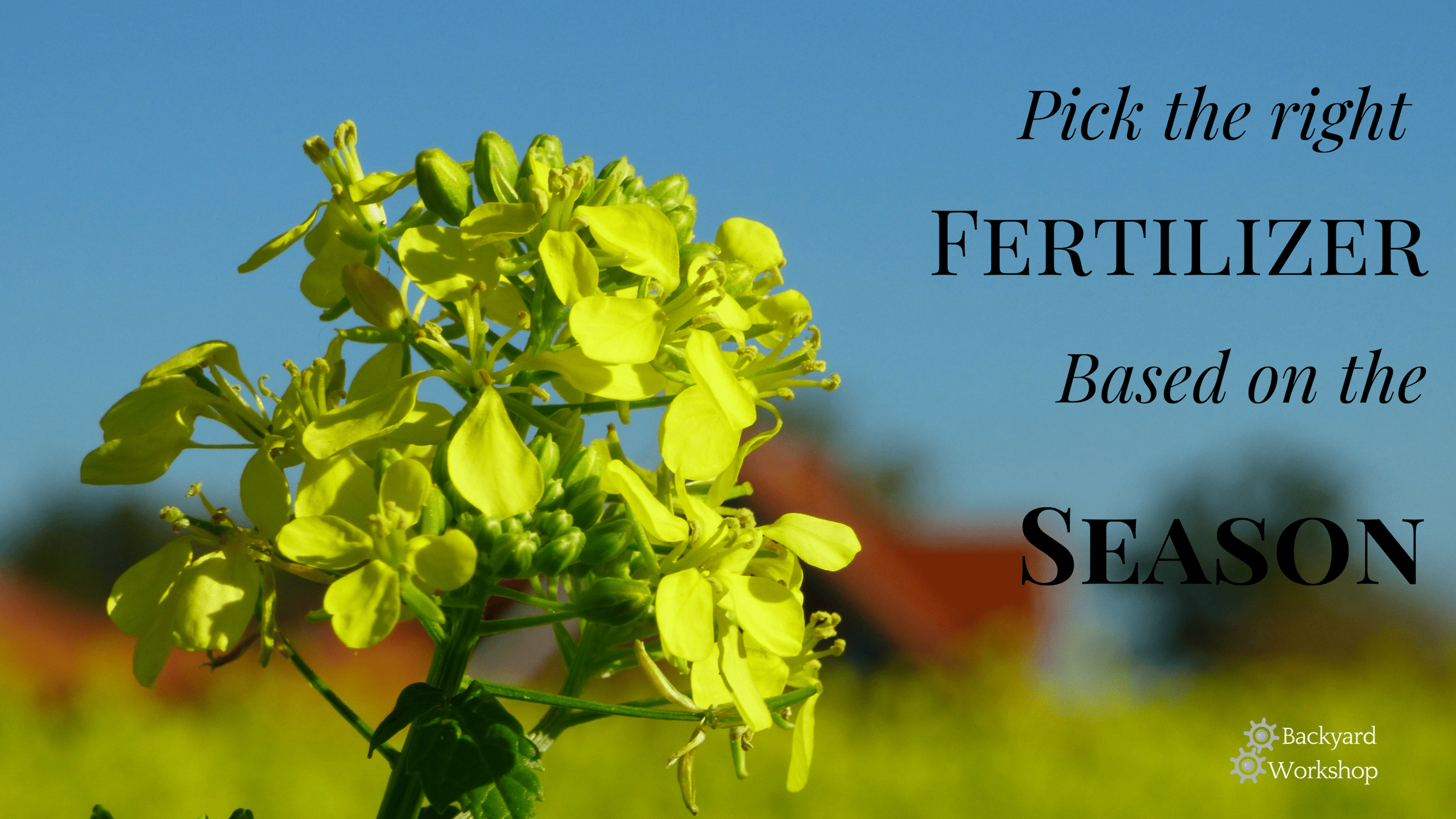Pick The Right Lawn Fertilizer Based On The Season

All lawn fertilizers aren’t equal and what worked during Spring isn’t necessarily the best for Summer or Fall. Using the best lawn fertilizer by season often determines the success of having the nice lawn your feet sink into, and kids can play on.
Best Types of Fertilizer for Spring
You may be tempted to promote grass growth with lawn fertilizer early in Spring, but it may not be the best option for your lawn.
After the long winter, the grass is no longer dormant and starts growing again. Nitrogen is an important nutrient the lawn requires. For Spring growth 20% nitrogen should be enough. The numbering on fertilizer bags show the N-P-K ratio (nitrogen-phosphorus-potassium) the fertilizer contains. A 20-5-10 fertilizer bag contains about 20% nitrogen, 5% phosphate and 10% potassium.
Nitrogen fertilizers stimulate shoot growth and give the nice green look to the lawn. Using a higher percentage than 20% of nitrogen isn’t essential for growth. It may give the grass a darker green look but could also be harmful to tender grass shoots.
If fertilizer is applied too early in Spring, the grassroots won’t have time to grow. For the grass to survive the dry summer seasons, it needs a strong and deep root system. Therefore, it’s better to wait and give the root system time to establish before you stimulate leaf growth with a lawn fertilizer.
Microbes need food to create the right soil environment for grass to grow. Natural fertilizers early in Spring is an excellent option to feed micro organisms.
We’ve gone more in-depth with an article here.
Lawn Care for Summer
Organic fertilizers could be a safer choice during the summer months. As a slow releasing fertilizer, its natural ingredients are released slowly to enrich the ground and is less likely to stress the lawn. Synthetic fertilizers if not washed down correctly, could burn and harm the grass especially during the hot summer months.
Cool season grass does not need synthetic fertilizer during the summer. Its growing season is Fall. You’ll just be wasting money, and possibly hurting the waterways, if you fertilize now.
If you want to fertilize the lawn, then use the slow releasing natural fertilizers. It may not have the same concentration of nutrients but is the safer option during the dry summer season.
For a longer look at the topic, check out our article here.
Feeding Your Grass in Fall
Nitrogen is always an essential nutrient for growing grass. During the Fall, potassium becomes important too. Potassium is the nutrient that helps combat disease and will help the grass survive the cold winter.
A high nitrogen and potassium fertilizer give the grass the nutrients it needs to recover from the summer dryness. It stimulates growth and prepares the yard for the winter. A formulation with a 24-4-12 N-P-K ratio should provide enough nitrogen and potassium without too high concentrations of phosphorus.
An established lawn doesn’t need much phosphorus. Lawn fertilizers with low phosphorus content prevent water pollution because there’s no excessive phosphorus swept into lakes and rivers. Be mindful of the amount of fertilizer used. The lawn probably needs less than you think.
With winter approaching, a slow release fertilizer could be the option to use. It usually will last during the dormant season until early Spring when enough remains in the soil to feed the grassroots when it starts growing.
If you need more throuough information, check out our article here.
When To Fertilize Cool-Season Grass and Warm-Season Grass
Fertilize warm-season grasses during the growing season. It doesn’t need fertilizer in the summer, and in the winter the grass is dormant. Apply lawn fertilizer twice during the Spring season and then again at the end of Summer.
The best time to fertilize cool-season grasses is the opposite to when warm-season grass needs fertilizer. Fertilize twice during its growing season in Fall and then again in Spring.

